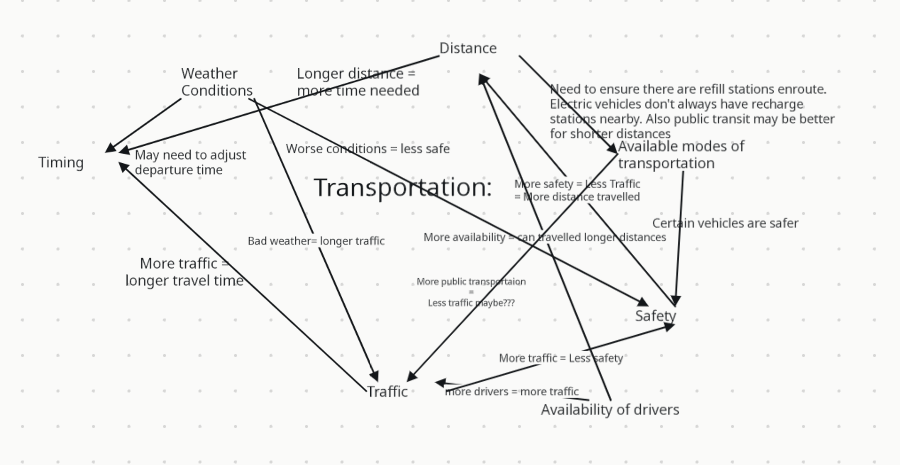2.3. Lecture 2: Complexity science¶
Before this class you should:
Read Think Complexity:
Preface; and
Chapter 1: Complexity Science
Sign up (via Google Sheets - see link on CourseLink announcement) to be the primary contributor to one lecture in the course notes or an in-class debater.
Before next class you should:
Read Think Python:
Preface;
Chapter 1: The way of the program;
Chapter 2: Variables, expressions and statements; and
Chapter 3: Functions
Note taker: Joe Bodner
Today’s class introduced two main topics: the Web of Life and Complexity Science.
2.3.1. Web of Life¶
The class began with a Web of Life activity designed to examine the interrelationships that exist everywhere in life. This activity focused on a specific problem, issue, or behaviour within an environment. Students were split into breakout rooms and the variables pertaining to the chosen topic were each assigned to a different student. A student would then suggest how their variable was related to another student’s variable and a line would be drawn between the two variables. This process continued, growing the Web of Life in complexity.

This was my group’s Web of Life example.
2.3.2. Complexity Science¶
Complexity science is a “new type of science” which studies complex systems. These systems are composed of many interconnected components which makes it so that their behavior cannot be easily predicted by simply examining the individual components [1].
Classical Science |
Complexity Science |
|---|---|
Equation-based |
Simulation-based |
Analysis |
Computation |
Continuous |
Discrete |
Linear |
Non-linear |
Deterministic |
Stochastic |
Abstract |
Detailed |
One, two |
Many |
Homogeneous |
Heterogeneous |
Classical science is primarily equation-based because it often deals with systems that can be described using relatively simple, linear, and deterministic or non-random mathematical models. Complexity science, on the other hand, relies on simulations because the systems it studies are detailed, non-linear, and stochastic or include randomness, making them difficult to fully understand using normal equations.
Classical Science |
Complexity Science |
|---|---|
Predictive |
Explanatory |
Realism |
Instrumentalism |
Reductionism |
Holism |
Classical science is Predictive because it deals with systems governed by well understood laws that allow for mostly precise forecasts of the future. It also breaks down the system into individual components instead of dealing with the system as a whole. Complexity science is Explanatory because it deals with systems that are too complicated to be fully predicted. Instead, it focuses on understanding how and why certain patterns or behaviors emerge as an end result.
An example of complexity science being used in a real-world setting is in modern traffic flow management. Classical science models traffic using continuous equations which assume a smooth and predictable flow but, as we know, real-world traffic is not predictable and thus classical science starts to fail in this area. Complexity science can be used to capture patterns like stop-and-go waves as well as be used in routing vehicles to determine the fastest path when driving at certain times of the day.
2.3.3. Attributions¶
[1] National Library of Medicine: https://pmc.ncbi.nlm.nih.gov/articles/PMC7187952/